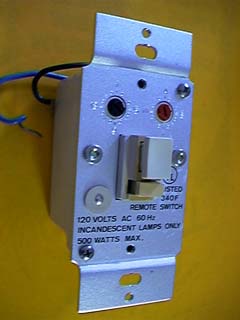Originally written and posted 2 June 2001.
Content last modified
Monday, 18 August 2025
.
External links last verified Friday, 8 June 2018.
Old-style Wall Switch Module Disassembly, Cleaning, and Modification
There has been a great deal written about X10 Wall Switch modules, including many modifications for meeting several objectives. It used to be possible to visit the Home Automation Knowledge Base Wall Switch Modification (Dead Link, remaining here for archive research purposes) page and ferret around there for all sorts of useful information compiled by fellow X10ers. Since the demise of Ido Bartana’s site, one now has to search around and hope.
The purpose of this page is to provide a pictorial description of WS module disassembly, to hopefully help make the process easier and less frustrating.
old-style Wall Switch module Disassembly
- Drill out the two rivets holding the plastic back cover and middle plastic section to the front metal plate:
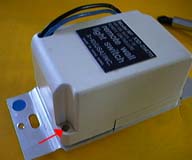
- Pull the rear cover back, exposing the two circuit boards.
- Unscrew the bottom circuit board and plastic frame from the metal frame:
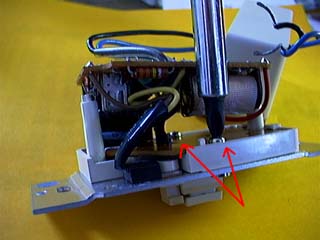
- Pull the plastic frame away from the metal frame, and lift the two circuit boards together off the plastic frame:
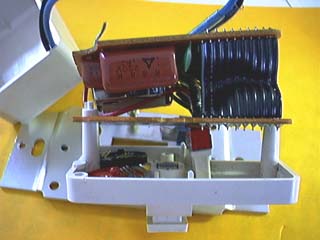
- You may wish to mark the House and Unit Code wheel locations.
- Go ahead and clean all contact surfaces (i use Cramolin®), and do any other planned work.
Local Dimming Modification
Last i checked, the Home Automation Knowledge Base only had an illustration for the new-style Wall Switches. Hence these images. It used to be possible to visit the Home Automation Knowledge Base Wall Switch Modification page for details and background information on the local dimming modification not presented below, but no longer.
Briefly, by merely adding one solder bridge to the P.C.B., a standard X10 Wall Switch Module gains the local dimming function. Dimming is achieved by pressing and holding the on/off button. The light will cycle between full-on to full-dim, then back to full-on. Let go at the desired brightness level. Brief presses still execute standard local On and Off, as before.
Be sure that the pushbutton switch contacts are clean and operation reliable before reassembling and installing.
- Printed Circuit Board as manufactured. Red arrow points to location where solder bridge needs to be added:
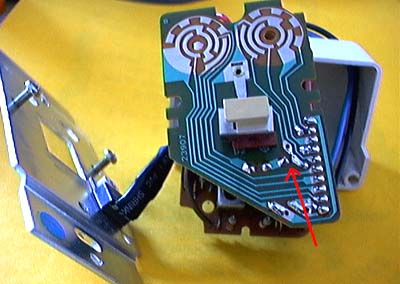
- Printed Circuit Board after solder bridge modification. Red arrow points to location of the newly-added solder bridge:
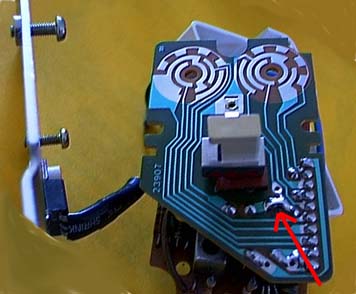
Module Reassembly
Basically the reverse of disassembly, with a few helpful tricks.
- With front of the switch plastic frame facing the floor, replace House and Unit Code wheels to proper locations. Be sure wheels are fully seated.
- With the same orientation as above, bring both P.C.B.s back into position and seat the bottom P.C.B. in the plastic frame.
- Reposition the metal frame onto the plastic frame.
- Fasten the bottom P.C.B. with its two screws. Ensure that it, the plastic frame, and the metal frame are all correctly seated.
- Reposition the top P.C.B. and rear cover in place. If the rear cover does not easily seat fully in place, ensure that the top P.C.B. is correctly resting on its indexing pins.
- Install a set of 4-40 X 1/2" or 5/8", or 3 X 13 to 15mm, machine screws and nuts in place of the original rivets, to hold the rear cover on.
Questions/comments may be addressed to: Sonic Purity
